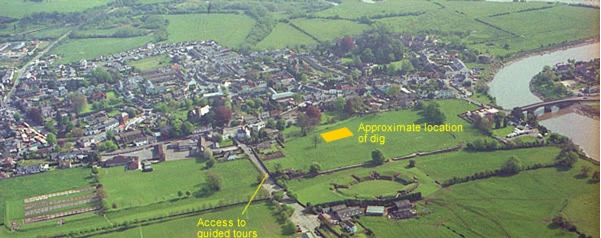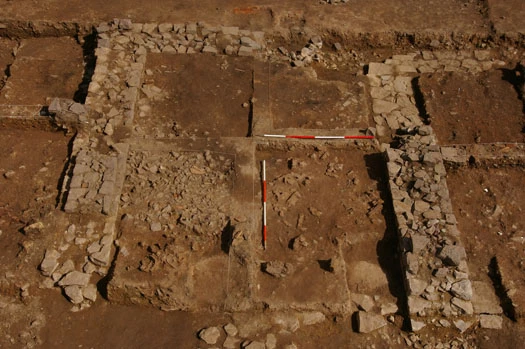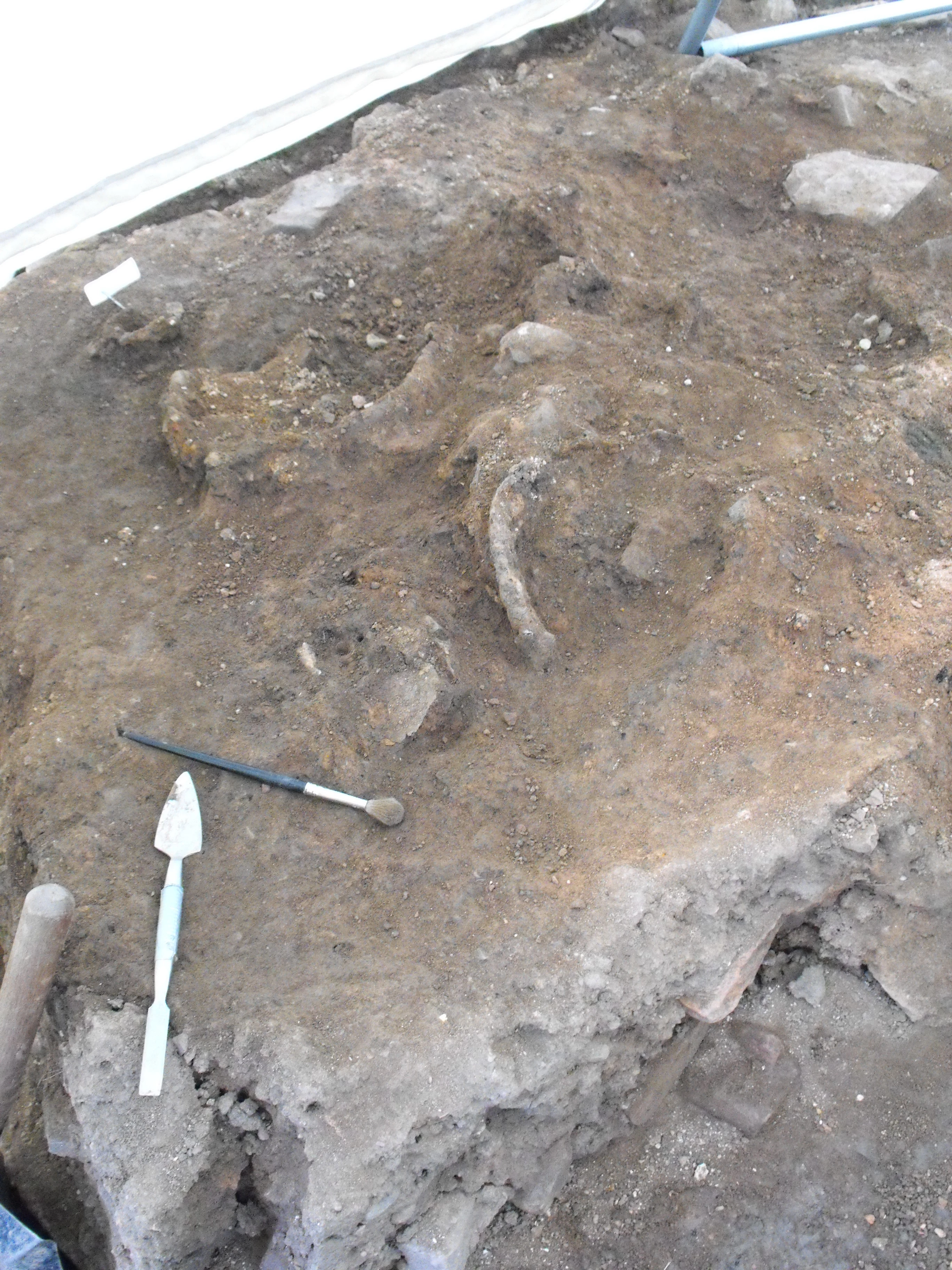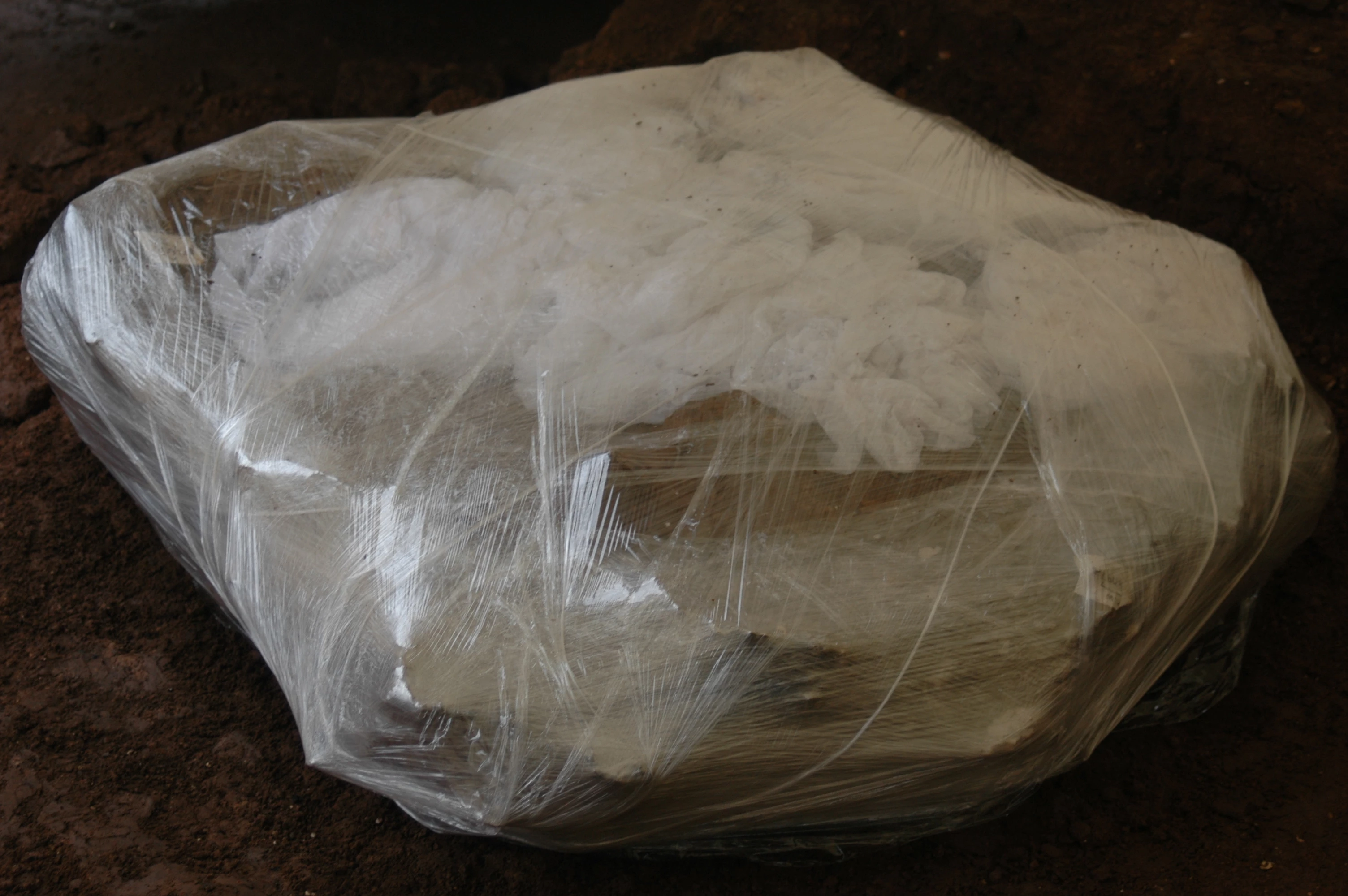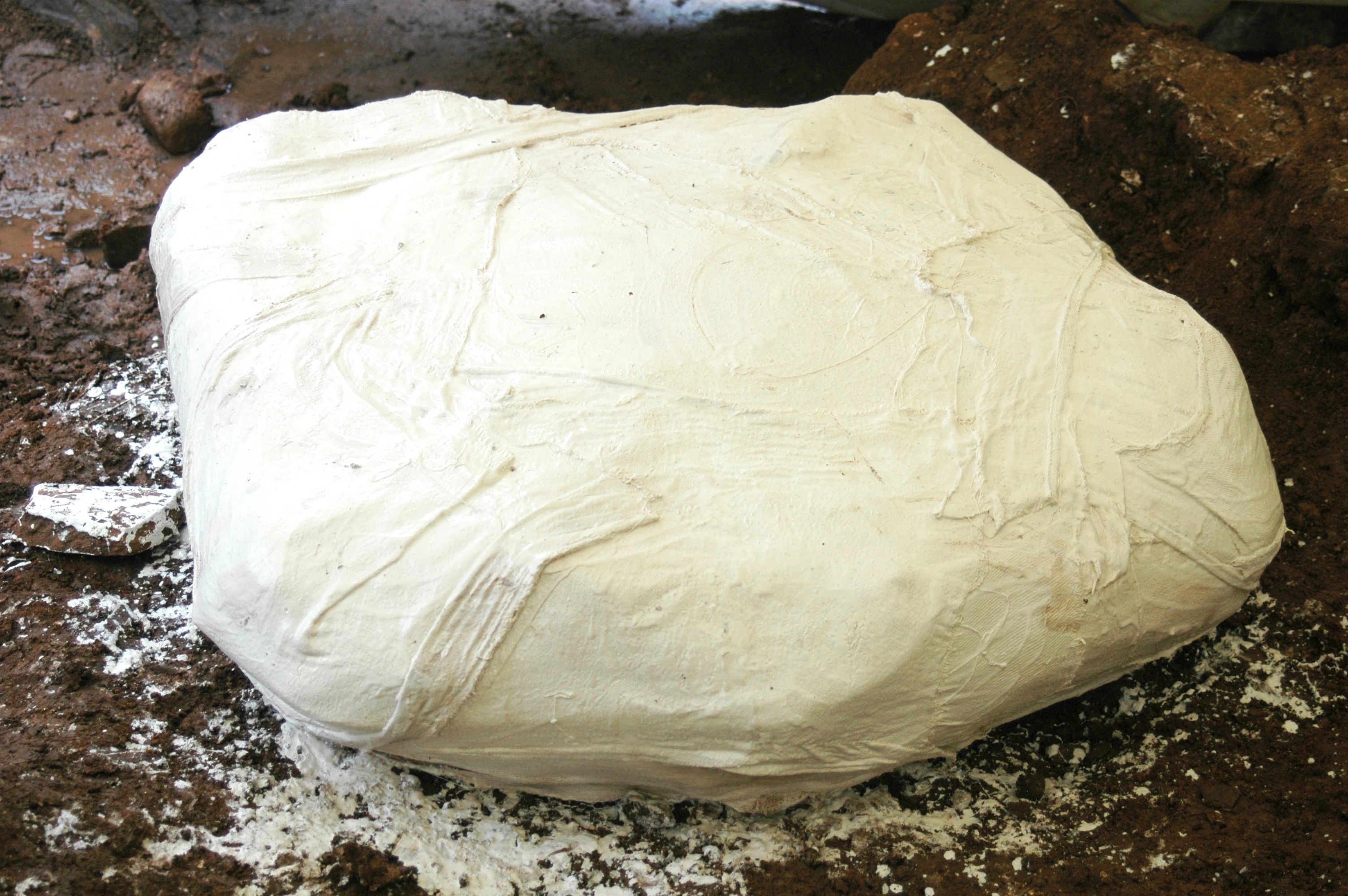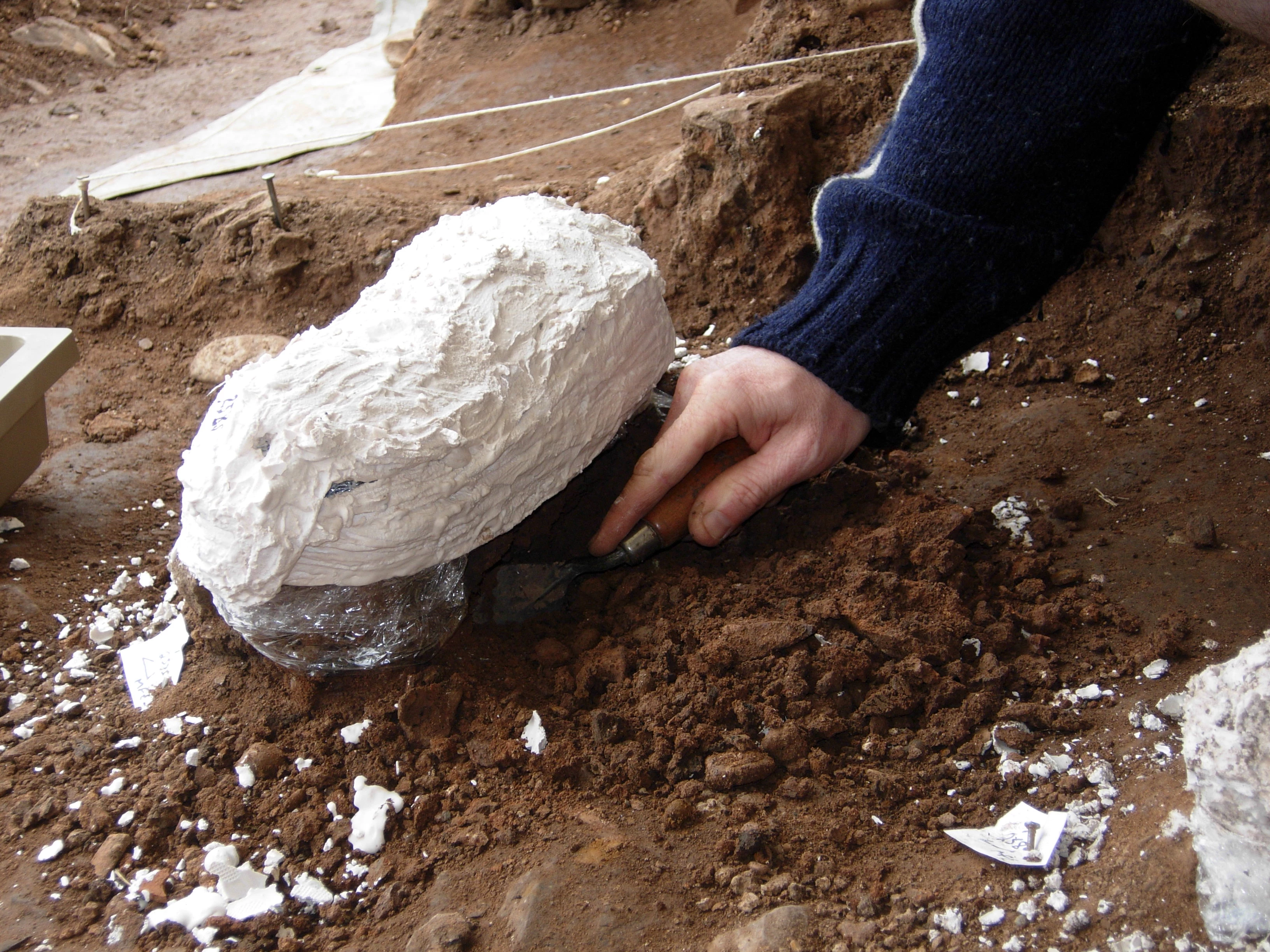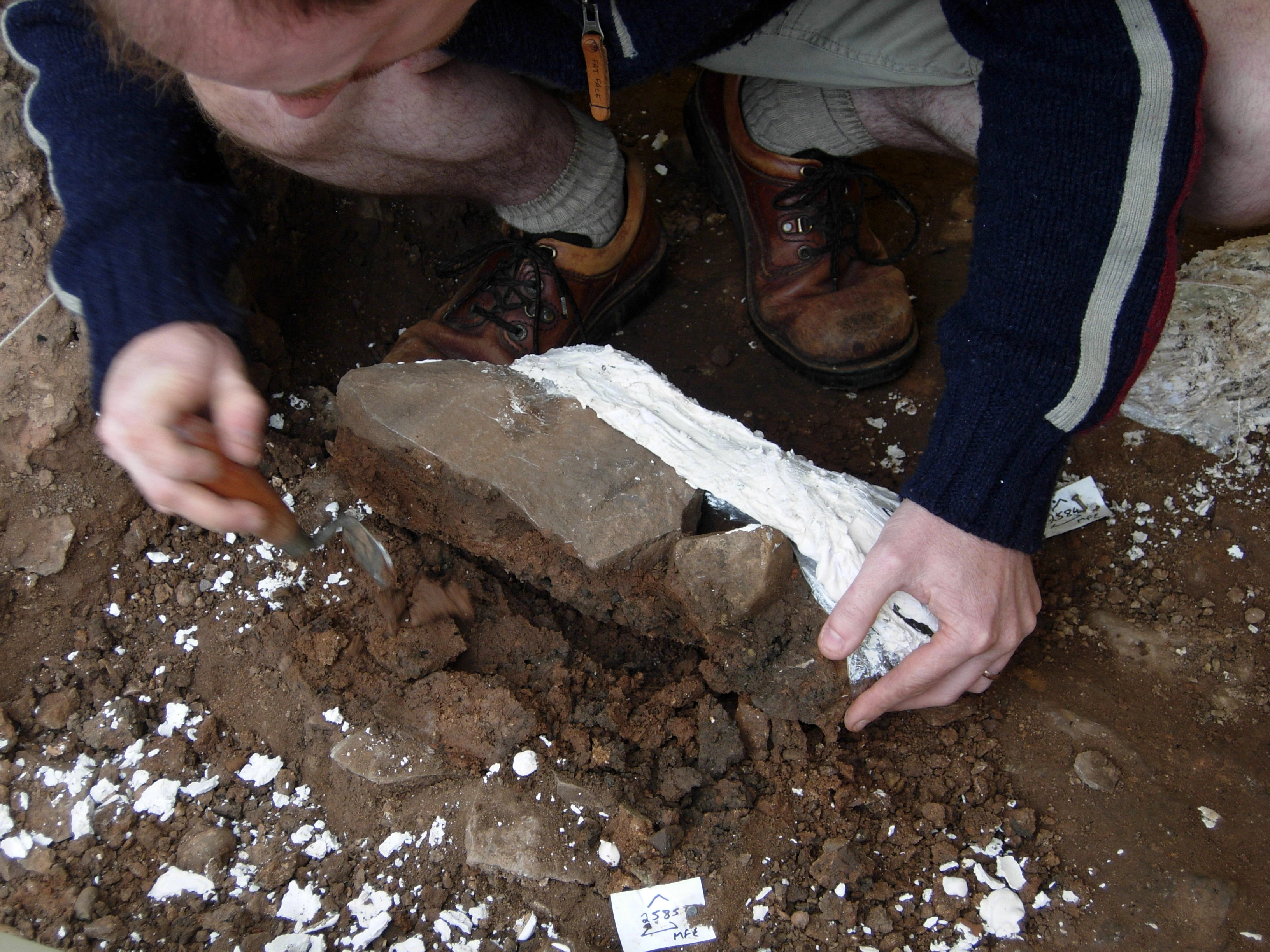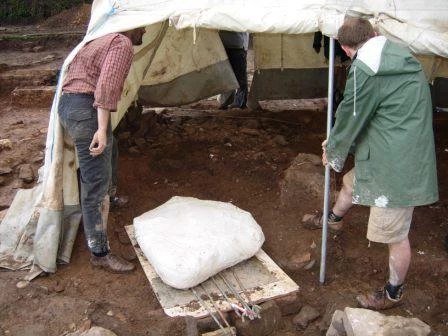Conservation of Roman Armour
, 24 March 2011
Archaeologists from University College London and Cardiff University have been excavating remains of Isca, the Second Augustan Legion’s permanent fortress, since 2007. The area excavated has centrered on a building in Priory Field, located in modern day Caerleon, South Wales.
Excavations in summer 2010 focused on an area of a courtyard building, with evidence to suggest it was a warehouse. A room in this building revealed some very exciting finds: the apparent remains of Roman body armour, ‘lorica segmentata’.
Archaeologists spent days carefully exposing these rare finds, which seem to have been thrown haphazardly on the floor of the warehouse.
These fragile artefacts were then carefully removed by conservators from the National Museum of Wales. The exposed objects were wrapped in Clingfilm, to prevent them from being contaminated by the materials used to support them.
Plaster of Paris bandages, similar to those used in hospitals, were very useful for holding these soil blocks together, and preventing damage to the artefacts whilst in transit.
Once the plaster had set, the team undercut the plaster blocks: this was a tense moment, as the archaeologists did not want to cut through any material that they could not see.
Supporting the artefacts with robust materials meant that they could be driven back to the National Museum at Cathay’s park safely. There they will be re-opened and carefully micro-excavated in the conservation laboratory.
The largest of the blocks removed measures about a metre squared, and had to be carried into the museum by 6 men, given its weight.
Progress of the investigation of this block will be recorded here.
